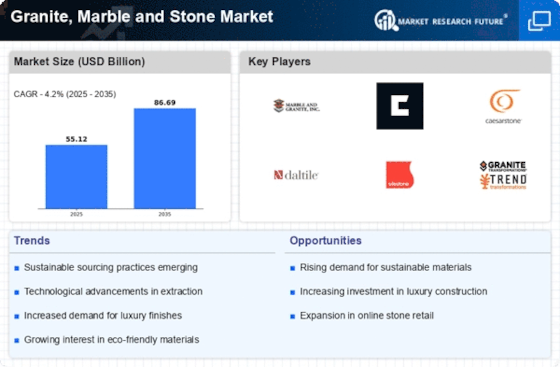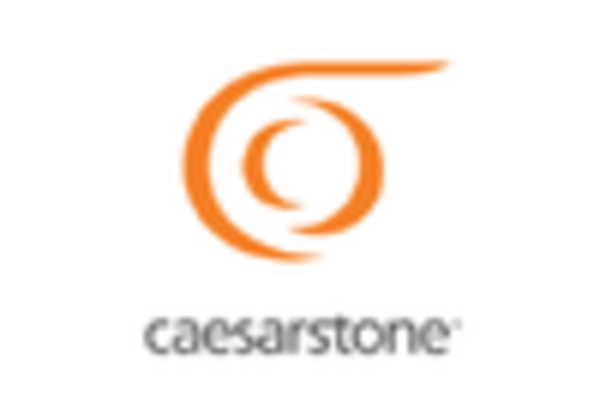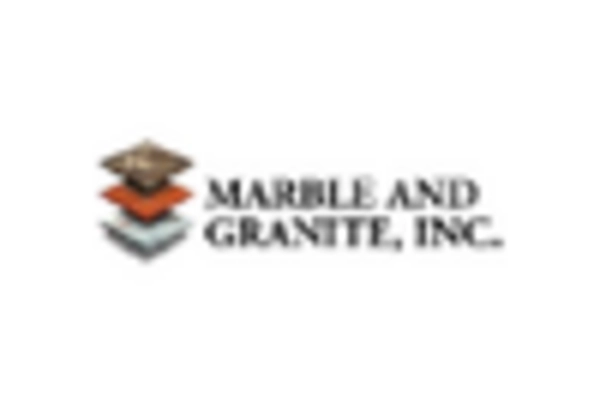Market Analysis
In-depth Analysis of Granite, Marble and Stone Market Industry Landscape
The market dynamics of the granite, marble, and stone industry reveal a landscape shaped by construction trends, architectural preferences, and global economic factors. This sector, integral to the building and infrastructure development, experiences fluctuations influenced by the demand for natural stone in various applications. One of the primary drivers of the market is the robust growth in the construction industry. As urbanization and infrastructure projects continue to rise globally, the demand for granite, marble, and stone for flooring, countertops, and facade applications sees a parallel surge. The aesthetic appeal and durability of these natural materials make them popular choices in both residential and commercial construction projects.
Architectural trends and design preferences also play a crucial role in shaping the market dynamics. The industry often witnesses shifts in demand based on the popularity of specific stone types, finishes, and colors. For instance, marble may experience a surge in demand due to its timeless elegance, while granite might be favored for its durability and resistance to wear. These preferences are influenced by factors such as cultural influences, evolving consumer tastes, and advancements in architectural styles, impacting the market's dynamics over time.
Global economic conditions significantly impact the granite, marble, and stone market, as the industry is closely tied to real estate development and infrastructure investments. During periods of economic growth, increased construction activities drive up demand for these materials. Conversely, economic downturns may result in a slowdown in construction projects, affecting the market dynamics. Additionally, fluctuations in currency exchange rates, trade policies, and geopolitical factors can influence the international trade of these materials, impacting market trends.
Technological advancements also contribute to the market dynamics, particularly in the extraction and processing of granite, marble, and stone. Modern quarrying and processing techniques enhance efficiency, reduce waste, and improve the overall quality of the extracted materials. The adoption of advanced machinery and tools not only streamlines production processes but also allows for customization, meeting the specific requirements of architects, builders, and homeowners. As technology continues to evolve, the industry is likely to witness further innovations that can impact production costs and material availability.
Environmental considerations have become increasingly important in the market dynamics of the granite, marble, and stone industry. Sustainable quarrying practices, responsible sourcing, and efforts to minimize the environmental impact of extraction and processing are gaining prominence. Consumers and businesses are showing a growing preference for materials that adhere to environmental standards, leading companies in the industry to adopt eco-friendly practices and certifications to meet these demands.
Competitive forces within the market are influenced by factors such as the geographical availability of raw materials, production capabilities, and the ability to offer a diverse range of products. Larger companies often leverage economies of scale, while regional or niche players may focus on specialty products or personalized services to differentiate themselves. Strategic alliances, mergers, and acquisitions also shape the competitive landscape, as companies seek to expand their product portfolios and market reach.
Challenges within the industry include the need for sustainable quarrying practices, fluctuating raw material costs, and the impact of global events, such as the COVID-19 pandemic, on construction activities. Adapting to these challenges requires industry players to remain agile and responsive to changing market dynamics.

















Leave a Comment